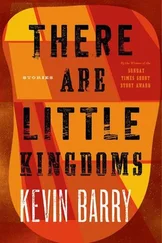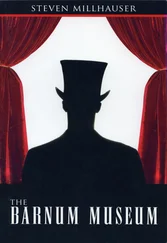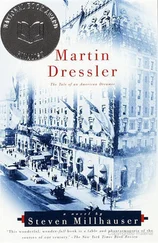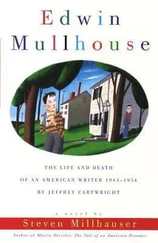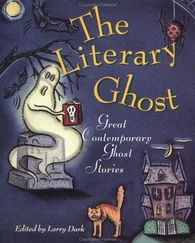In the painting Elizabeth is alone, a small, shadowy figure almost swallowed up by the immensity of dark lake and dark sky, which flow into each other indistinguishably. The swirling array of many-hued browns all stream from the dark Elizabeth figure at the center. A mood of deep melancholy pervades the picture, as if a stain of brown sadness has seeped through a crack in the universe. Elizabeth’s brief Journal entry for 6 June 1838 reads: “Upon seeing the picture I was seized with a terrible agitation. Edmund has seen into my very soul.” Three days later, on 9 June, she writes: “My spirits have lifted on this glorious morning. How deeply I feel the presence of a benevolent Spirit in the hills and valleys. I must pray for guidance.” Elizabeth’s tantalizing comments have been taken to refer to the coming crisis in her relation with her brother, but it is possible that she had already begun to show signs of the nervous disorder that was to reveal itself more decisively in the years to come.
[11]
DORNRÖSCHEN
1839
Oil on canvas, 19 1/4 × 27 7/16 in.
On 23 December 1838 Elizabeth recorded a single quotation in her journal: “‘The fairy tales of my childhood have a meaning deeper than the truths taught by life.’—Schiller, Wallenstein.” There is no further mention of Schiller in the Journal, but among Elizabeth’s favorite books must be counted Grimm’s Kinder- und Hausmärchen , to which she refers frequently in 1839–40 and of which she possessed two different editions: the revised edition of 1819 and the abridged edition, or Kleine Ausgabe , of 1825, with illustrations by a third Grimm brother, Ludwig Emil Grimm. It is possible that she read and translated directly to Moorash, although in the case of so well known a tale the memory of a childhood telling cannot be discounted. Dornröschen , usually translated “Briar Rose,” is the Grimm version of Perrault’s La belle au bois dormant (“The Sleeping Beauty”); it is one of the shortest and most powerful of the Grimm tales, far more evocative than Perrault’s lengthy version.
A surviving sketch (on the back of a bill for canvas and stretcher) reveals that Moorash at one point attempted to depict the great hedge of thorns bursting into blossom, but there is no trace of this vision in the final painting, in which the spell remains unbroken. In this study of darkness we are in Dornröschen’s tower room; only as the eye adjusts to the predominantly black tones do we distinguish the thick thorn branches that have pushed through the open casement window and fill the small chamber entirely. Dornröschen remains invisible except for her hauntingly long and vinelike hair, which winds about the thorny branches and hangs in thick, disturbing clusters, although she may also be present as a kind of faint glimmer that appears to come from somewhere in the depths of the dark thorns and permits us to make out the sharp thornpoints, the hair, the tones of blackness. The general effect is uncomfortable, suggesting on the one hand a dark peacefulness, a brooding tranquility, a yearning for annihilation, and on the other hand the oppressiveness of living entombment.
Why did Moorash turn to this tale and this image in the early months of 1839? Unfortunately there can be no clear or certain answer. Was he, as Havemeyer suggests, thinking of his beloved Elizabeth, entombed at Stone Hill Cottage, enwrapped in the thorns of his art and waiting for the unthinkable prince to come? Havemeyer does not mention a brief but crucial entry in Elizabeth’s Journal on 2 January: “Visit by Vail and his new bride, Charlotte. Vail doting, Edmund charming, Charlotte pretty in a girlish way; shy; big clear eyes, pewter gray.” It is the first recorded visit of the forty-year-old Vail and his girlish wife, Charlotte (1823–1846), who was sixteen years old but looked two years younger. Moorash might have been thinking of the young bride, spellbound in marriage to the graying Vail — but in that case, whose footsteps would be heard on the tower stair when the thorns burst into blossom? Or should we rather think of Moorash himself as Dornröschen, asleep in the deep spell of his art?
[12]
FACES IN THE STREAM
1839
Oil on canvas, 25 × 32 1/2 in.
Moorash appears to have made a number of preliminary sketches, which have not survived, in April or May of 1839; the painting was completed in late summer, probably during the last week of July. The stream is almost certainly the picturesque rocky brook that flowed, and flows still, from the Saccanaw Hills across a wooded stretch of Moorash’s property to empty into Black Lake. A small, railed bridge, no trace of which remains, crossed the stream at the place where an old Indian trail led to the water. The bridge rail can be seen in the painting as a broken and scattered series of brown and yellow brushstrokes in the rushing water. The faces, though recorded as little more than energetic dashes of paint, are unquestionably those of Elizabeth, William Pinney, and Sophia Pinney, as an entry in Elizabeth’s Journal makes clear, although even without that entry the student of Moorash’s work can recognize the distinguishing marks of all three faces, however dissolved and scattered by the turbulent brook.
Sophia Pinney (1816–1846), William Pinney’s sister, had visited at Stone Hill Cottage on three occasions in the mid-1830s but began to accompany her brother regularly in the spring of 1837. In that year alone William and Sophia stayed at Stone Hill Cottage for a week in April, two weeks in May, ten days in June, three weeks in August, a week in October, and four days in November. The frequent visits continued in 1838, and in the spring of 1839 William, now an architect in Boston, built a summer cottage on the far shore of Black Lake at the foot of a wooded hill. The cottage, which was twice the size of the cottage at Stone Hill, included a music room, a library, and a housekeeper’s chamber; in a stable behind the cottage Pinney installed a pair of bays equipped with English saddles in the latest style. Sophia had become close friends with Elizabeth, and in the spring and summer of 1839 the two couples visited back and forth almost daily, often rowing across the lake at dusk to one or the other cottage and separating long after midnight. At the Pinney cottage, Sophia, at Elizabeth’s bidding, would play selections from Schumann’s recently published Fantasiestücke , op. 12 (1838), or Carnaval , op. 9 (1837), sometimes adding a Chopin étude or nocturne, while Edmund sat with tense fingers and half-closed eyes in a “paradoxical state of dreamy alertness” (Journal, 18 July 1839). Elizabeth was not simply liked by her younger friend (Sophia at this time was twenty-three, Elizabeth twenty-five); rather, she seemed to have inspired in Sophia an outpouring of ardent admiration. At the same time she woke in Sophia a kind of maternal protectiveness that made Elizabeth restless and a little impatient. Sophia would insist that Elizabeth wear a shawl on cool summer nights; she tried to change Elizabeth’s careless eating and sleeping habits; she became acutely sensitive to Elizabeth’s moods and began to share her headaches. Elizabeth was fond of her passionately devoted friend but refused to permit herself to be reformed. Once, when Sophia reproached her for staying up all night and paying for it with a savage headache, Elizabeth spoke sharply to her, whereupon Sophia burst into tears. The sharp exchange was an exception; the friendship was warm and ran deep, though one senses that Sophia was the more tightly bound of the two, perhaps because the deepest current of Elizabeth’s feelings ran toward her brother.
Читать дальше



